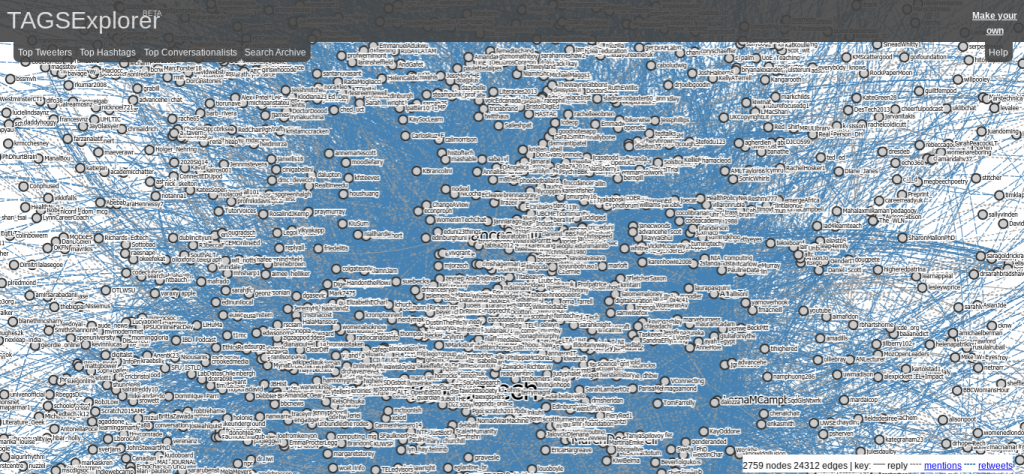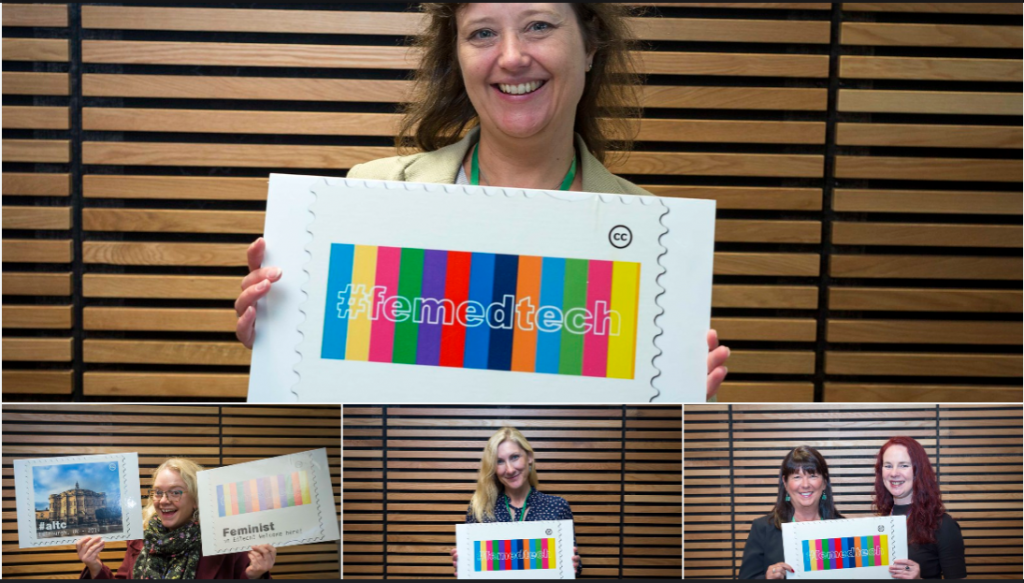This month, February 2020, is the third time I volunteer to curate the @femEdTech Twitter account. If you haven’t come across it before, I encourage you to:
- check out @FemEdTech on Twitter and to follow the #FemEdTech hashtag;
- find out how volunteers work together to curate this account and support this growing network;
- visit the FemEdTech Open Space and learn more about what’s going on including the FemEdTech Quilt of Social Justice project.
When I curated the account the first time, in May 2018, I wrote about my week as a curator in this post, and I reflected on what’s involved, setting up a TAGSExplorer and other accounts that inspired me.


As you can see, things have changed a bit since my first time curating!
In March 2019, during my second stint at the Twitter deck of the FemEdTech network, I also wrote a post. This time, I reflected more on how people were contributing to what was then a much bigger and broader conversation. I shared examples of how we worked together to grow our network, to spread the word and to raise awareness of the challenges we are yet to overcome in order to achieve greater equality in Learning Technology.
At that time I had started including information about this in talks I gave, including for example:
- Community, Openness, Equality: a keynote in three hashtags #SocMedHE18 (talk, video): Social Media for Learning in Higher Education conference,
- Promoting equality in a distributed organisation, joint keynote with Martin Hawksey for International Women’s Day, University of the Highlands and Islands,
- Who’s responsible for the future of open? #femedtech #oer19, contribution to #femedtech Open Space for OER19 conference;
- Webinar: Equality in Learning Technology: New insights from ALT’s Annual Survey, with Martin Hawksey,
- Technology and Education: opportunities and challenges for equality at the University of Sussex.
And more of which I covered in a review at the end of last year, celebrating a #FemEdTech kind of year.
Which is why this time round, reflecting on my time as the account’s guest curator, I want to step away from the hashtag, from the online network and share with you how the network has changed my every work and life, how the work we do translates into the world outside of the Twittersphere.
Making momentum
One of the things that you can only really guess at from the online conversation is how much making goes into building any kind of momentum, and I mean that literally. Just now, with the quilt project, you can watch the process of momentum becoming material. But before the quilt, there were badges and signs and letters and stickers, parcels sent across the country and sometimes across the world, to distribute tokens of belonging to this community. Cat memes, photos, blog posts, radio shows, podcasts, artwork, drawings… people create all kinds of things and over time it creates real momentum:
Meeting strangers
The other thing that has really changed is to meet individuals who are also active in this network in person. Two years ago when I mentioned this topic, no one had even heard of it. Now, it’s been a while since I last went to an event at which I didn’t have a conversation about it, met fellow supporters, seen badges, stickers or exchanged hugs. Some of us even have the t-shirt ;).

It’s surprised me how powerful it is to have these meet ups. They act as a catalyst for activities and collaboration well beyond the day on which they take place. They also help to encourage those who give so much of their time and effort to the network, giving me an opportunity to say thank you to someone who has helped me or supported me or someone whom I have only ever ‘met’ on Twitter. It’s powerful to have a way to bring the conversation to promoting equality, it gives us permission to discuss common issues around HR policies, professional development, career progression and collecting data about these things and to share new developments.
Hashtag and humanity
Being part of this effort, the work that the hashtag #FemEdTech has grown into, gives me hope that there are more and more people, some of whom I already know and some of whom I will never meet, who take an active role, who make a contribution – and for that I am grateful. I am grateful to those who recommend less visible colleagues for keynotes on the big stage, to those who work to make their events and conferences more welcoming to all, to everyone who helps to amplify the voices of those who are heard less often and those who champion causes like gender equality in their professional practical.
It is definitely not an easy gig. But for every exasperated, eye rolling, impatient or indifferent listener, I also meet one who does care, who wants to know more, who might get involved.
It’s often an uncomfortable experience to stand on a stage or sit around a meeting table, telling your audience about injustice, discrimination, about the gender pay gap and inequality. Even if you are able to share positive trends or hopeful new initiatives, the message remains one of “always more to do”. No matter where you look, no matter what kind of inequality you fight for, there is always more to do. We may not all agree on what the most urgent priorities are in our individual, institutional or national contexts, but I hope that we share a sense of urgency, a drive to do better as professionals in Learning Technology, as human beings.